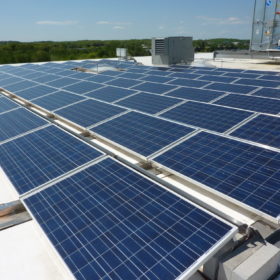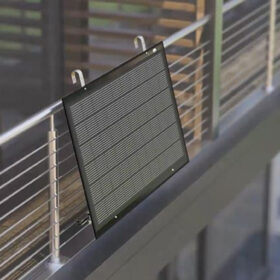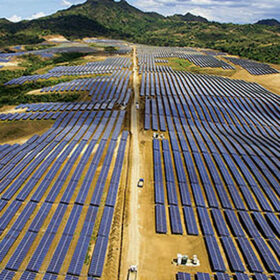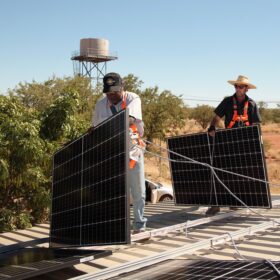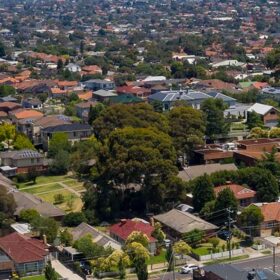Commercial systems support record rooftop solar installs
A record 921 MW of PV was installed across Australian rooftops in the final quarter of 2023, taking new rooftop solar capacity to about 3.17 GW for all of last year, second only to the 3.23 GW total rolled out in 2021.
Worker injured in fire at South Australian solar farm
A worker is being treated in hospital for burns and police are investigating after an inverter burst into flames at the 30 MW Mannum Stage 2 solar farm being developed near the town of the same name in South Australia’s Riverland region.
Epic adds big battery to complement South Australian solar
Epic Energy has added a large-scale battery energy storage project to its growing portfolio of renewable energy infrastructure assets with the 100 MW / 200 MWh facility to sit alongside the company’s two solar farms at Mannum in South Australia.
Italian startup unveils 350 W balcony TOPCon solar modules
Fly Solartech Solutions Srl’s new 60-cell modules have a power conversion efficiency of 17.87% and a temperature coefficient of -0.27% per degree Celsius. The company offers the panels with 300 W, CEI-021-certified microinverters featuring 96.5% peak efficiency.
Darwin solar-power green hydrogen plant secures major project status
French renewables developer TE H2’s ambition to be an early mover in Australia’s giga-scale renewable energy generation and hydrogen production industry has received a boost with the Northern Territory government awarding major project status to the proposed Darwin H2 Hub.
ClearVue inks Australian manufacturing and distribution deal
Solar glass manufacturer ClearVue Technologies will look to ramp up the commercialisation of its power-generating solar windows in Australia after finalising its first manufacturing and distribution agreement in the country.
Tesla releases API for solar, Powerwall, EV charger
The company released an application programming interface to enable third-party developers to interact with Tesla home energy products.
Queensland council calls for feedback on giga-scale solar and battery project
Plans to build an almost 1 GW solar farm and battery energy storage facility in southern Queensland are now available for public scrutiny with the Toowoomba Regional Council calling for feedback on the development application.
Rooftop solar delivers generation milestone in NEM
The rooftop solar juggernaut shows no signs of slowing in Australia with an unprecedented contribution from household PV systems delivering a string of new records in the National Electricity Market to close out 2023.
Solar Philippines begins working on 4 GW solar park
Solar Philippines says it has broken ground on what it touted to be the world’s largest solar array – a 4 GW solar park spread across 3,500 hectares of land in the northern part of the country.
